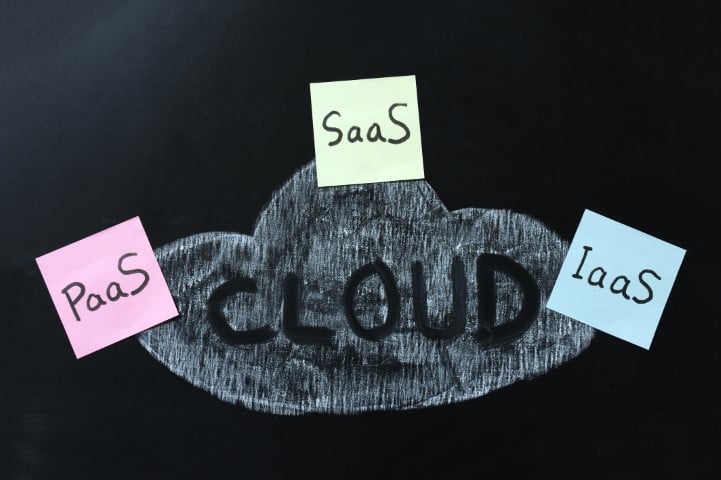Cloud computing is the concept that has modified the business model of companies. It focuses mainly on data storage and access, communication between PCs and the provision of services and application development. Everything on one platform: Cloud.
But before making the leap to cloud technology, it is essential to know how your services work and what types exist, In other words, it is necessary to specify how we are going to make the leap to the cloud. Today, these alternatives for integration are available in the market: Infrastructure as a service O IaaS Y Platform as a service O PaaS.
Both are the acronyms that constitute the pillars of modern computing, and even when they have certain items in common, they are very different systems, each one with its characteristics and applications. Let's see the keys and clarify the IaaS vs IaaS concepts.
IaaS: infrastructure as a service
Provides access to a range of computing resources in virtualized environments. Its definition encompasses several essential items, like space on virtual servers, network connections, bandwidth or IP addresses.
All Available hardware resources are stored on virtual servers. and its maintenance is carried out by the cloud service provider. Therefore, the company has access to all resources without having to worry about anything else.
Therefore, rather than having to invest in assets such as software or server licenses, companies can rent resources flexibly according to their needs and pay only for what they use.
Business applications with IaaS, the most common are:
- Hosting of web pages. Running websites with this infrastructure is cheaper than running on traditional hosts.
- Storage, data backup and recovery. Companies avoid the initial investment required to create a storage infrastructure and limit the complexity of its administration. Backup and disaster recovery management is also simplified where feasible, since the system does it in an automated and highly efficient way.
- Applications and resources. IaaS provides all the necessary infrastructure to support web applications, as storage, web and application servers, and network resources. Institutions can quickly implement web applications on IaaS, as well as scaling the infrastructure up or down, without difficulty, when application demand is unpredictable.
PaaS: platform as a service
Also known as the “cloud integration platform”, This infrastructure provides an environment that enables developers to create applications and services that work over the Internet.. The software is hosted in the cloud and is accessed by companies through their web browser.
This type of service usually includes preconfigured functionalities and users can select or discard the functions that suit their needs.. Thus, applications range from very simple environments that do not require any special knowledge or installation, even very advanced development options.
The main features of iPaaS can be summarized as:
- Information management functions and leads: record information and quickly integrate it into a CMS or automation platform.
- B2B data exchanges for secure data flows between partner networks: speeds up the onboarding process for customers and partners.
- Integration products– Allow customers to manage direct data migration and synchronization tasks.
In summary, these contributions pursue a fundamental objective: break away from traditional environments, based on application and data isolation, to make an infrastructure based on the integration of new processes in real time a reality.
IaaS vs PaaS: advantages of each of the infrastructures
What they have in common is that they are online services that work in the cloud and work through pay-per-use. Its maintenance and technical assistance are the responsibility of the supplier., what makes this type of service the best option for companies that want to reduce costs, improve communication and increase productivity.
The main benefits of IaaS are as follows:
- Decrease in initial expenses and overhead costs: IaaS avoids having to make an investment to configure and manage a local data center, making it a good alternative for start-ups or companies with very specific needs.
- Optimizing business continuity and improving disaster recovery. To achieve a highly available infrastructure, with advanced data backup and recovery options, significant technical and human implementation is needed. Despite this, This cloud service greatly reduces these needs and enables real-time access to applications and information during a potential failure or power outage.
- Maximum and fast scalability: it is feasible to have this infrastructure ready in record time. At the same time, resources can be quickly scaled to meet the needs of each business, increasing them in peak periods and reducing them when the demand for commercial services decreases.
For his part, advantages of PaaS they are summed up like this:
- Connectivity: combines all current technological applications in any of their formats (databases, protocols, text files, etc.)
- Integration: gives the opportunity to unify solutions and data that come from both outside and inside the organization, as well as virtual and local environments.
- Versatility: this infrastructure is capable of supporting all kinds of integration patterns, users and data.
- Agility in its implementation– The need to install new software or applications is eliminated and the purchase of equipment or servers is not necessary.
- Lower costs and investment: Compared to building a local integration system, the financial resources required to develop this cloud platform are much less.
Knowing that both options offer interesting advantages for companies, and in reality, some points are common in both, the decision to opt for one or the other must be based on the analysis of the real needs of each business.







